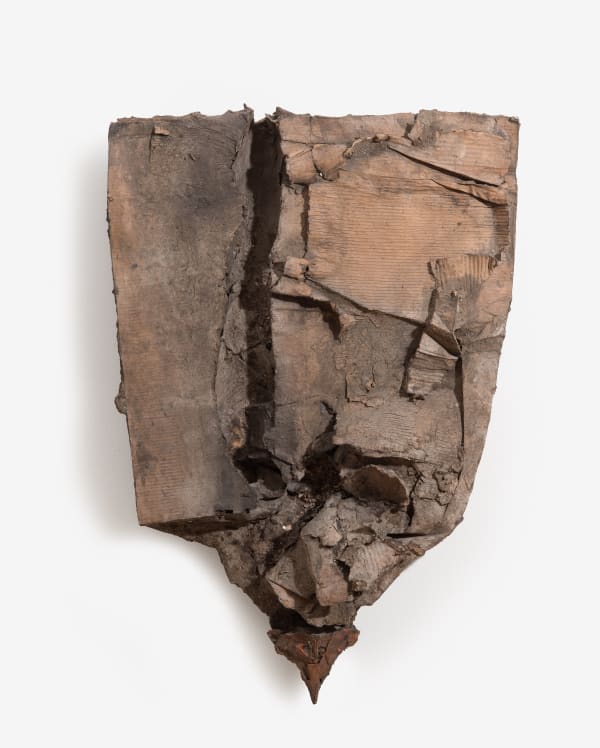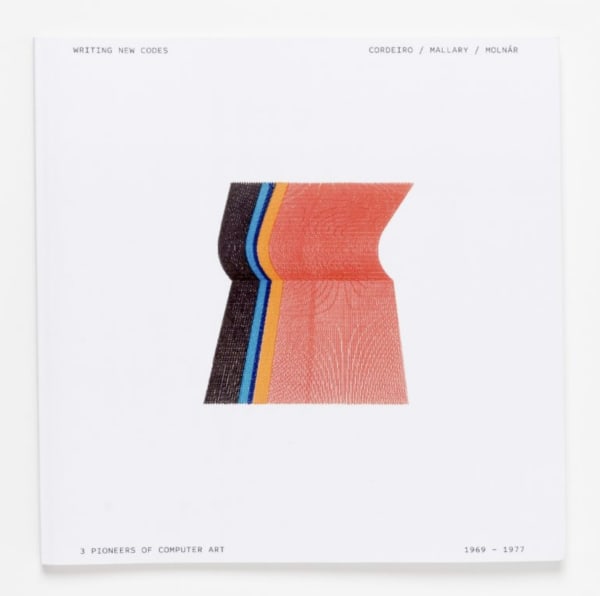Robert Mallary American, 1917-1997
In the early 1960's Mallary (b. 1917 Toledo - d. 1997 Northampton, United States) was a prominent member of the Neo-Dada or Junk art movement, following on the heels of Abstract Expressionism along with American artists such as John Chamberlain, Richard Stankiewicz and Claes Oldenburg.
Mallary developed a unique and experimental style capturing fragile found urban detritus - discarded pieces of cardboard, wood, cloth rags, and later, Tuxedos, casting them in resin to become hard and permanent.
Experimenting as early as the 1930s with plastics, he began in the mid 1950s making reliefs of sand and straw mixed with polyester resin. The dark and moody reliefs alluded to the region’s landscape and as with most of his oeuvre had undercurrents of doom, both in the imagery and in the titles sourced from classical mythology, political and philosophical ideas. After discovering the health risks of resin he became interested in the computer's potential as an artistic tool. In 1968, he exhibited in London a work that is considered one of the first computer-designed sculptures. From 1967 until his retirement Mallary taught art at the University of Massachusetts.
In 1959 Mallary was included in two Museum of Modern Art exhibitions; Sculpture U.S.A. and Sixteen Americans, followed by a 1960 Guggenheim International Award and exhibition, and the Museum of Modern Art's 1961 Art of Assemblage exhibition. By 1968, Mallary was also included in five annuals at the Whitney Museum of American Art, the VII Biennial de Sao Paolo, the Seattle and New York World’s Fairs, and had a retrospective at SUNY Potsdam. A recent group exhibition was the ground breaking show at the LACMA, Los Angeles: Destroy the picture: painting the void, 1949-1962 in 2013.
-
 Robert MallaryUntitled, 1965Cast bronze40.6 x 40.6 x 12.7 cm
Robert MallaryUntitled, 1965Cast bronze40.6 x 40.6 x 12.7 cm
16 x 16 x 5 inches -
 Robert MallaryUntitled (Standing Figure), 1965Cast bronze67.3 x 22.9 x 10.2 cm
Robert MallaryUntitled (Standing Figure), 1965Cast bronze67.3 x 22.9 x 10.2 cm
26 1/2 x 9 1/8 x 4 1/8 inches -
 Robert MallaryQueen of Hearts (Venus), 1961Mixed media109 x 76.2 x 25.4 cm
Robert MallaryQueen of Hearts (Venus), 1961Mixed media109 x 76.2 x 25.4 cm
42 7/8 x 30 x 10 inches -
 ROBERT MALLARYThe Sage / New York, New York, 1961Wood and mixed media resin95.3 x 41.3 x 12.7 cm
ROBERT MALLARYThe Sage / New York, New York, 1961Wood and mixed media resin95.3 x 41.3 x 12.7 cm
37 1/2 x 16 1/4 x 5 inches -
 Robert MallaryAmerigo, 1958Mixed media177 x 119 x 10 cm
Robert MallaryAmerigo, 1958Mixed media177 x 119 x 10 cm
69 3/4 x 46 7/8 x 4 inches -
 Robert MallaryUntitled, 1957-8Mixed media113 x 60 x 5 cm
Robert MallaryUntitled, 1957-8Mixed media113 x 60 x 5 cm
44 1/2 x 23 5/8 x 2 inches -
 Robert MallaryUntitled, 1957-8Mixed media110.5 x 143.5 x 6.4 cm
Robert MallaryUntitled, 1957-8Mixed media110.5 x 143.5 x 6.4 cm
43 1/2 x 56 1/2 x 2 1/2 inches -
 Robert MallaryUntitled, 1957-8Mixed media75 x 66 x 9 cm
Robert MallaryUntitled, 1957-8Mixed media75 x 66 x 9 cm
29 1/2 x 26 x 3 1/2 inches -
 Robert MallarySuspended Forms, 1957Mixed media45.8 x 49.5 x 6.4 cm
Robert MallarySuspended Forms, 1957Mixed media45.8 x 49.5 x 6.4 cm
18 1/8 x 19 1/2 x 2 1/2 inches
-

In Real Life
9 Jun - 29 Jul 2021After months of only following the artworld through our screens, many of us now miss the experience of seeing art in person. This Summer The Mayor Gallery celebrates that irreplaceable...Read more -

INTERNATIONAL POP
15 Jun - 15 Oct 2020The Mayor Gallery is pleased to present a curated selection of International Pop Art featuring artists from around the world including France, USA, Brazil, China and the UK. Billy Apple®...Read more -

Writing New Codes
Cordeiro / Mallary / Molnár 6 Jun - 27 Jul 2018‘Writing New Codes’ presents three major pioneers of computer art – Waldemar Cordeiro (b. 1925 Rome, Italy – d. 1973 São Paulo, Brazil), Robert Mallary (b. 1917 Toledo, USA –...Read more -

ROBERT MALLARY
RELIEFS 1957 - 1961 1 Nov - 1 Dec 2017The work of Robert Mallary (b. 1917 Ohio, USA – d. 1997 Massachusetts, USA) is characterised by a consistent commitment to technological innovation, and to the exploration of materiality. As...Read more -

FRIEZE NEW YORK
ROBERT MALLARY : NEW MEXICAN RELIEFS 1957 - 1958 5 - 7 May 2017The Mayor Gallery participated this year at FRIEZE NEW YORK 2017 showcasing the works of Robert Mallary. The work of Robert Mallary (b. 1917 Ohio, USA – d. 1997 Massachusetts,...Read more -

DO NOT REMOVE
BRUCE CONNOR, GEORGE HERMS & ROBERT MALLARY 14 Sep - 26 Oct 2011Read more



















